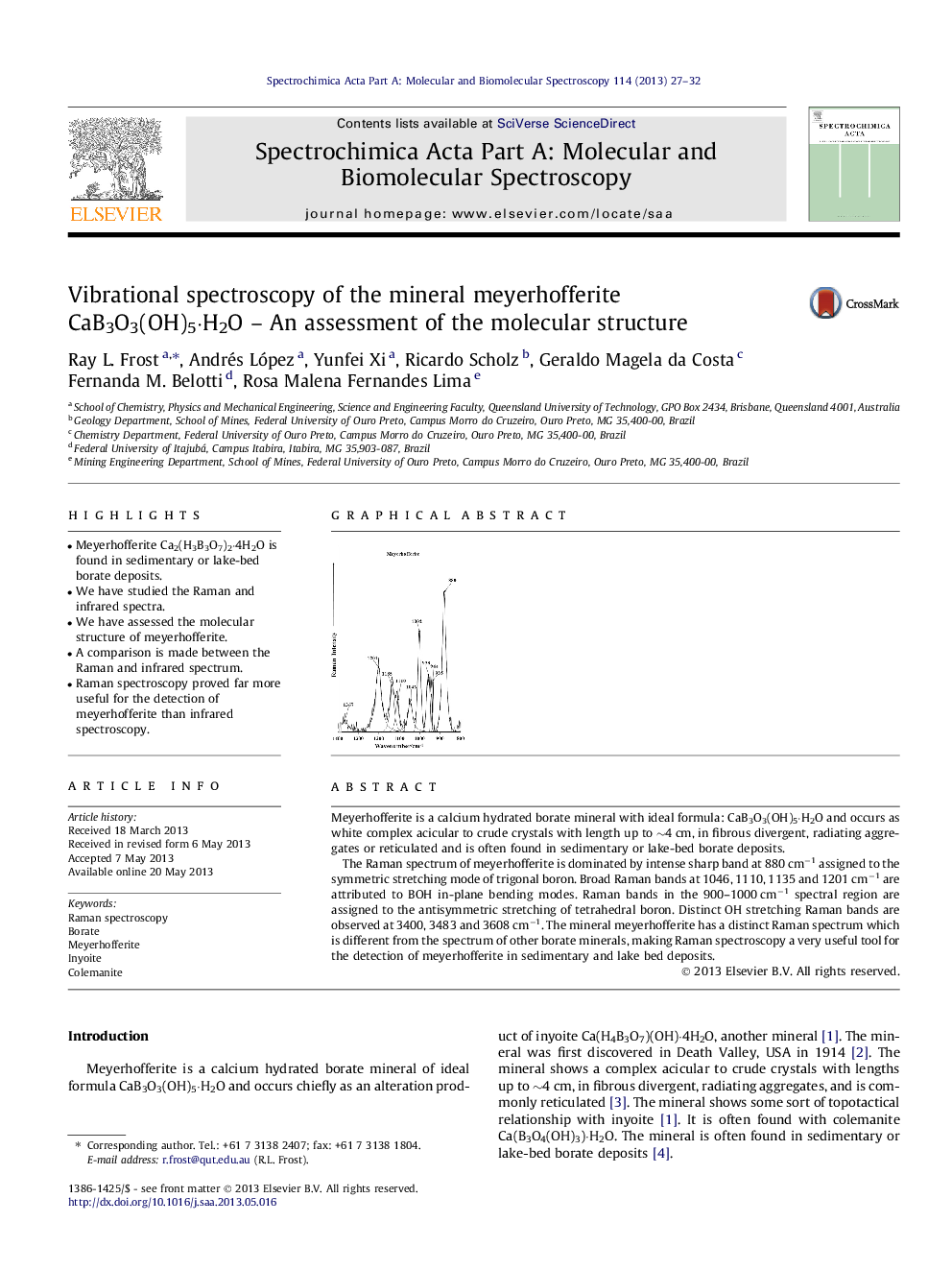| Article ID | Journal | Published Year | Pages | File Type |
|---|---|---|---|---|
| 1231263 | Spectrochimica Acta Part A: Molecular and Biomolecular Spectroscopy | 2013 | 6 Pages |
•Meyerhofferite Ca2(H3B3O7)2·4H2O is found in sedimentary or lake-bed borate deposits.•We have studied the Raman and infrared spectra.•We have assessed the molecular structure of meyerhofferite.•A comparison is made between the Raman and infrared spectrum.•Raman spectroscopy proved far more useful for the detection of meyerhofferite than infrared spectroscopy.
Meyerhofferite is a calcium hydrated borate mineral with ideal formula: CaB3O3(OH)5·H2O and occurs as white complex acicular to crude crystals with length up to ∼4 cm, in fibrous divergent, radiating aggregates or reticulated and is often found in sedimentary or lake-bed borate deposits.The Raman spectrum of meyerhofferite is dominated by intense sharp band at 880 cm−1 assigned to the symmetric stretching mode of trigonal boron. Broad Raman bands at 1046, 1110, 1135 and 1201 cm−1 are attributed to BOH in-plane bending modes. Raman bands in the 900–1000 cm−1 spectral region are assigned to the antisymmetric stretching of tetrahedral boron. Distinct OH stretching Raman bands are observed at 3400, 3483 and 3608 cm−1. The mineral meyerhofferite has a distinct Raman spectrum which is different from the spectrum of other borate minerals, making Raman spectroscopy a very useful tool for the detection of meyerhofferite in sedimentary and lake bed deposits.
Graphical abstractFigure optionsDownload full-size imageDownload as PowerPoint slide
